How to Cut Chicken Breasts Into Cutlets
Boneless, skinless chicken breasts can be turned into cutlets in no time. Here are the steps.
Learning how to cut a chicken breast into thin cutlets is an essential skill for weeknight cooking. Thinner chicken cutlets cook more rapidly than full-sized breasts and are ideal for searing or breading and frying in dishes like chicken marsala, chicken schnitzel, or chicken Parmesan.
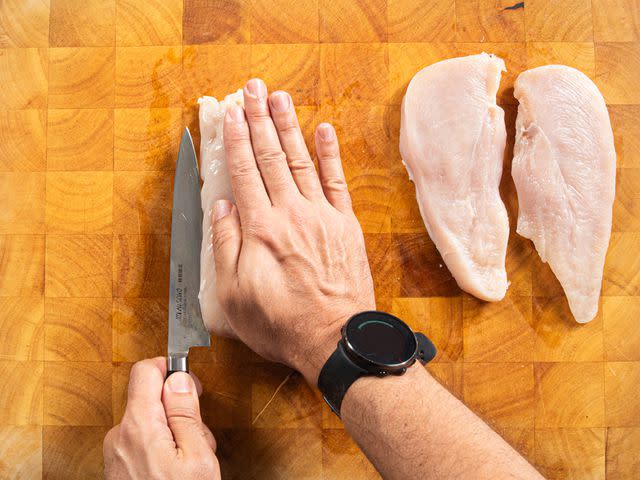
Serious Eats / Amanda Suarez
The most difficult step is the cutting: It requires a sharp knife and a bit of practice. If you're still a little green in the kitchen, you'll probably make a few holes in your chicken breasts before you get the hang of it—no worries, they'll still taste just as good.
Once you've got the breast split, the pounding is fun and easy. The key is not to pound too hard, which gives you less control over the final thickness and can lead to holes in your meat. So easy does it, okay?
Step 1: Split The Breast
Place a boneless, skinless chicken breast, with the tender removed, on a cutting board, and hold it flat with the palm of your non-knife hand. Using a sharp chef's, boning, or fillet knife, slice the chicken breast horizontally into two even pieces; try to do this in as few strokes as possible so the meat looks smooth and not sawed.
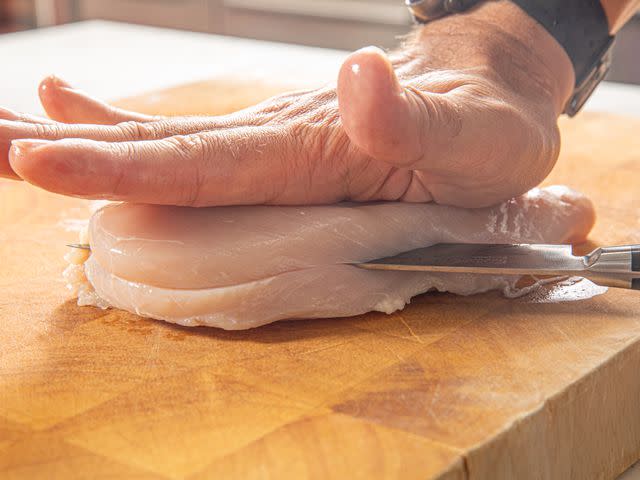
Serious Eats / Amanda Suarez
It helps if you position the chicken close to the edge of the cutting board so that the knuckles of the knife your hand don't bump against it as you go. Also be sure to keep the fingers of the supporting hand raised and out of the path of the knife.
Step 2: Prepare to Pound
You'll want to sandwich the chicken breast slices between sheets of plastic or paper (parchment works but waxed paper is better since the chicken sticks to it less). Plastic works particularly well given its slick surface, but it's not the most environmentally-friendly of choices, so we encourage avoiding it if you can.
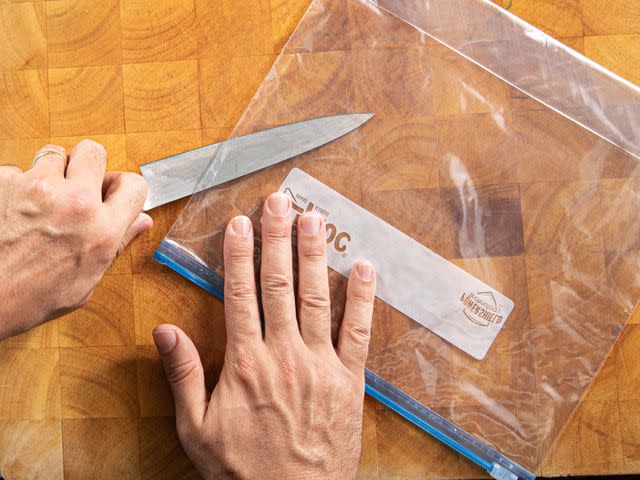
Serious Eats / Amanda Suarez
If you do use plastic, a heavy-duty gallon zipper-lock bag is best, as it's less prone to tearing during pounding; if you do use a zipper-lock bag, it's easiest to slice it open along one or two sides with a sharp knife, making inserting and removing the chicken a snap. Alternatively, you can use layers of plastic wrap, though plastic wrap has a tendency to tear during pounding.
Once you have your paper or plastic ready, set a piece of chicken between the layers, making sure to spread the paper or plastic out well to avoid wrinkles, which can leave imprints on the meat during pounding.
Step 3: Pound Chicken
Use a meat pounder or the bottom of a sturdy skillet to gently pound the chicken. When pounding, go slow and steady to avoid making holes. Rather than moving the pan directly up and down, use slight lateral motions to gently coax the chicken into shape. The goal is an even form and thickness, usually about 1/4 inch thick.
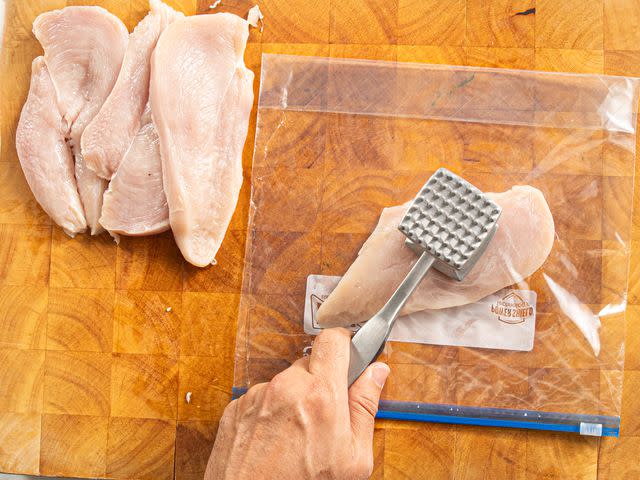
Serious Eats / Amanda Suarez
Step 4: Done!
That's it, you have a proper chicken cutlet. Now repeat with the remaining chicken pieces and then get cooking!
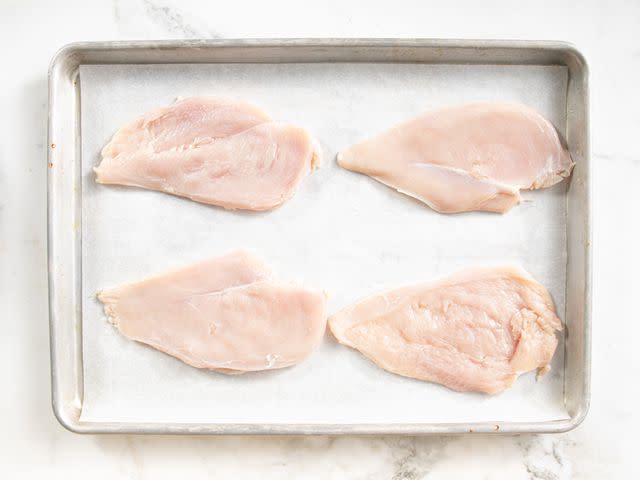
Serious Eats / Amanda Suarez
July 2015
Read More
Read the original article on Serious Eats.

